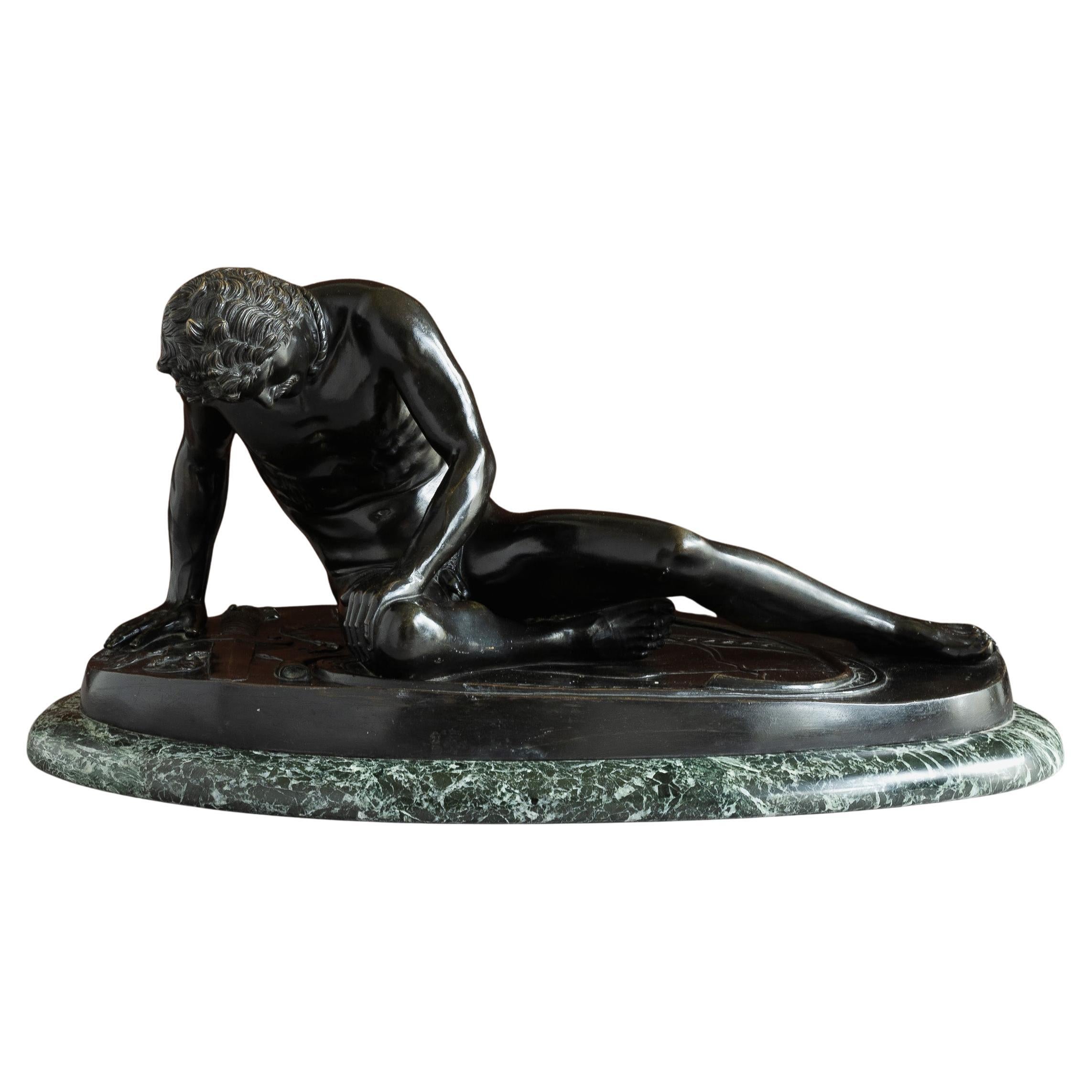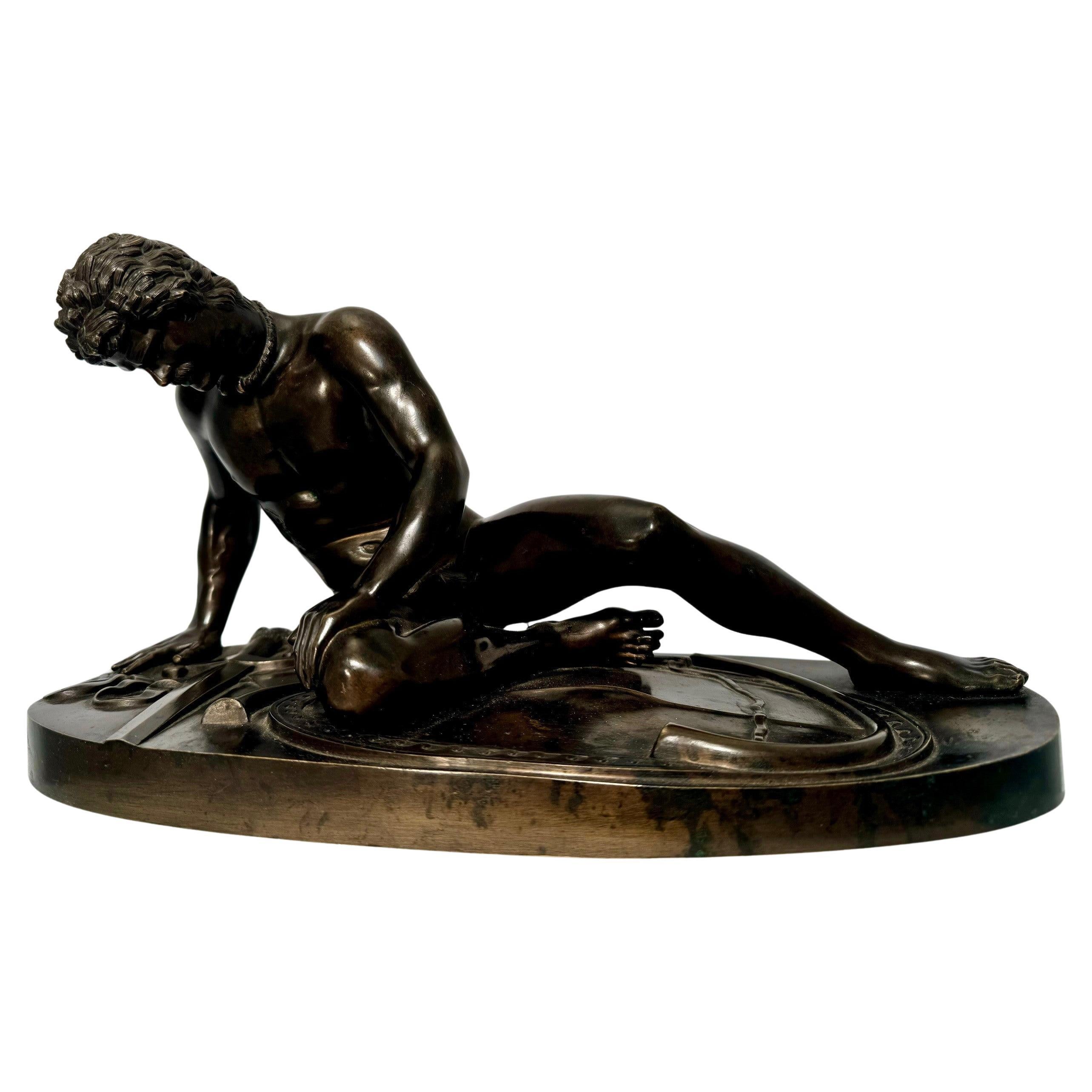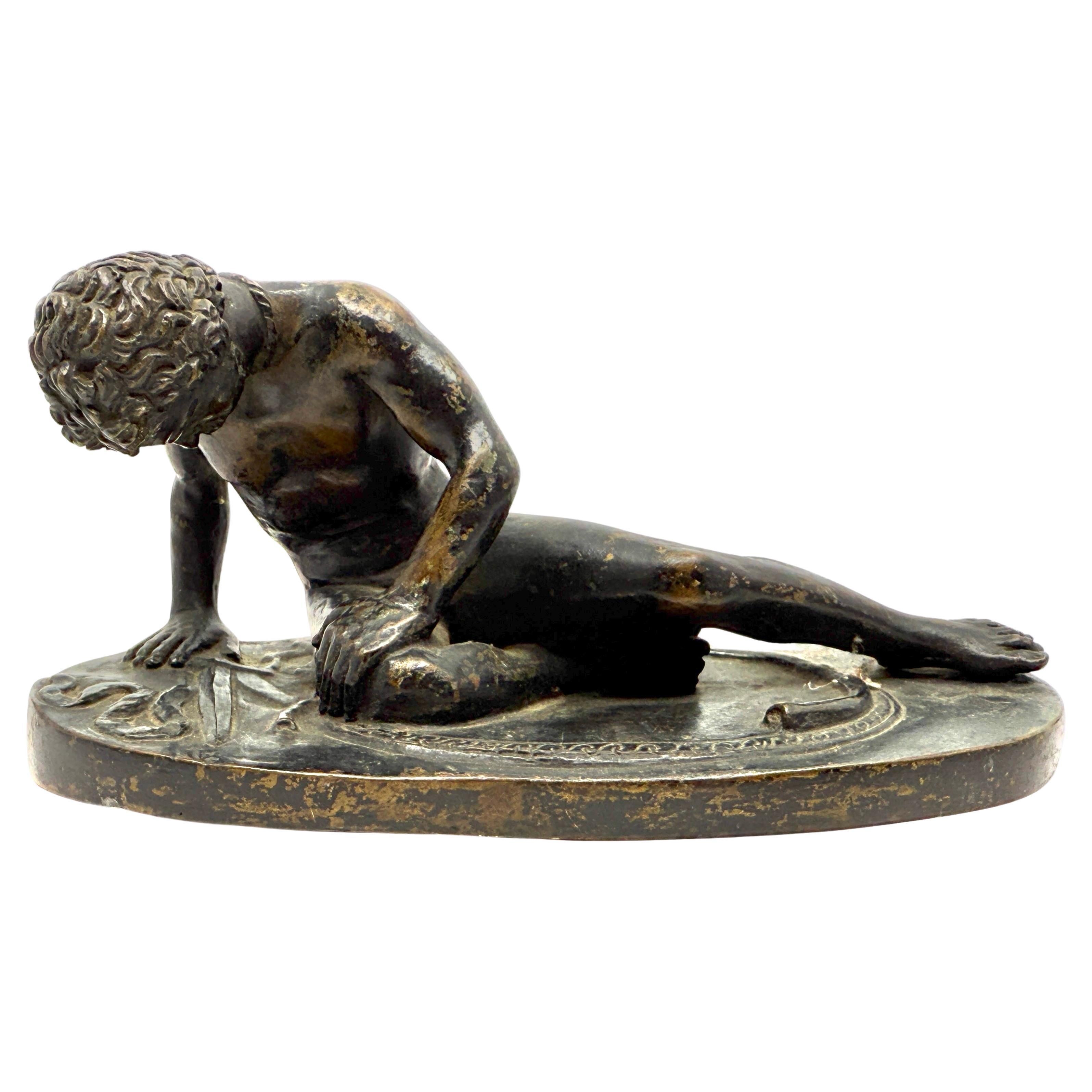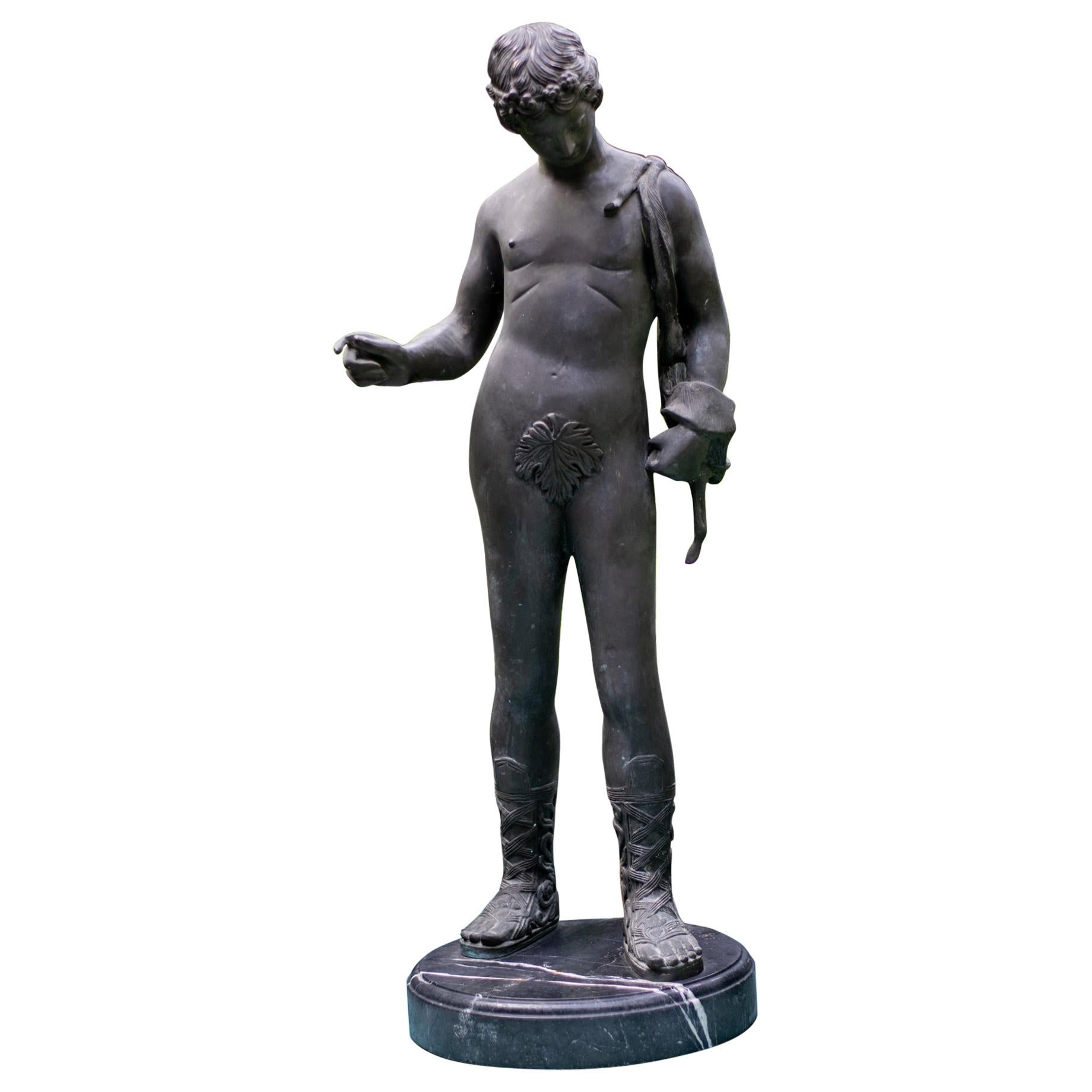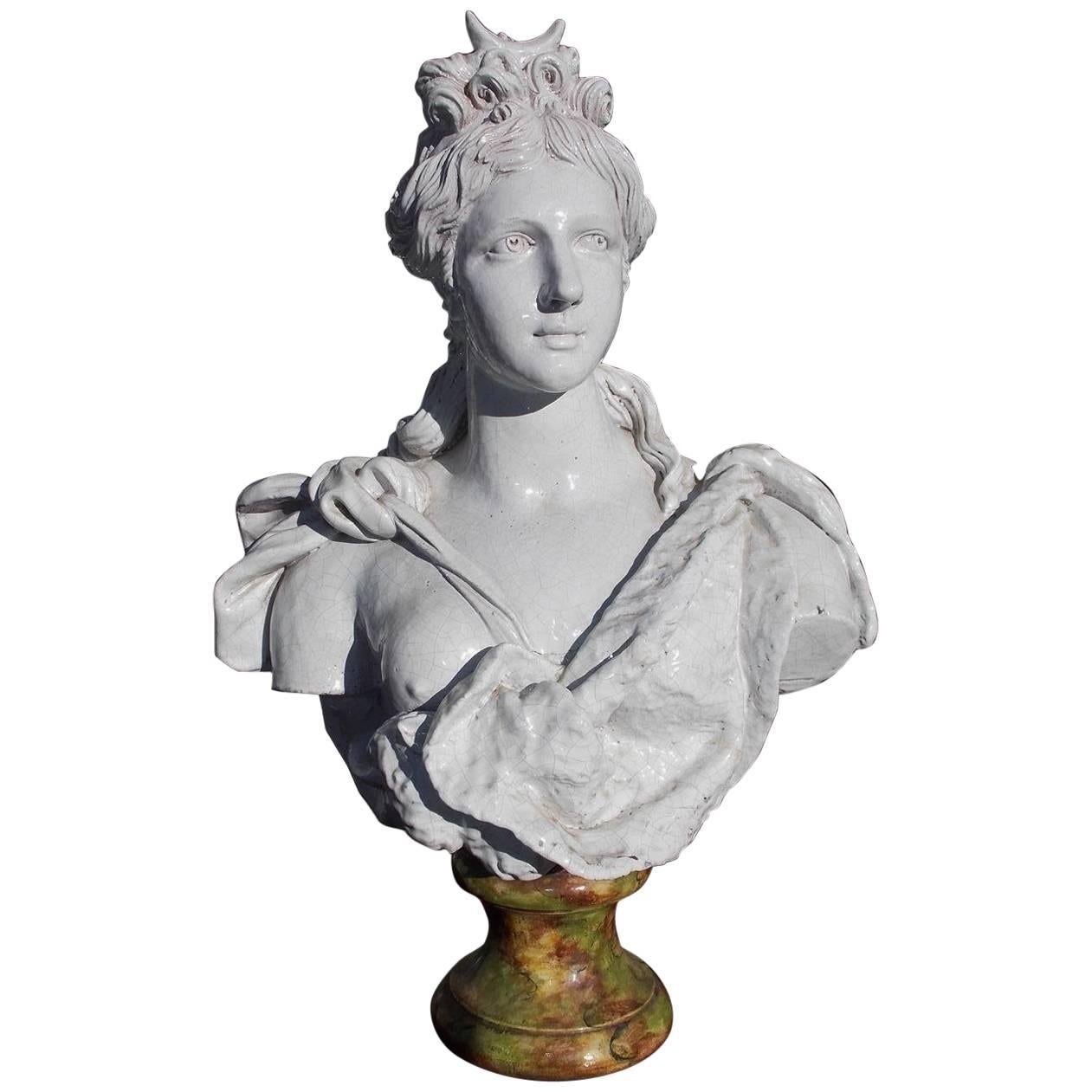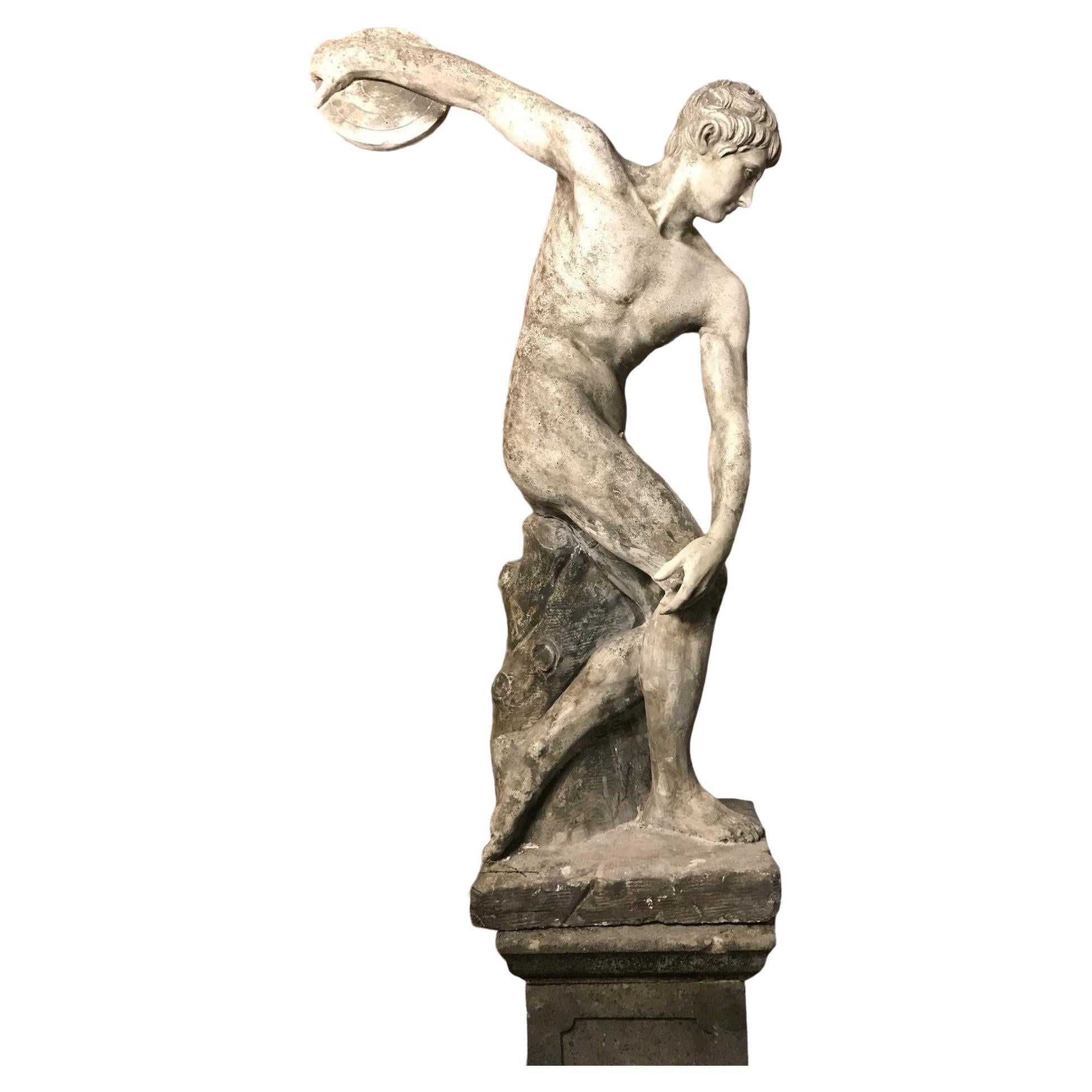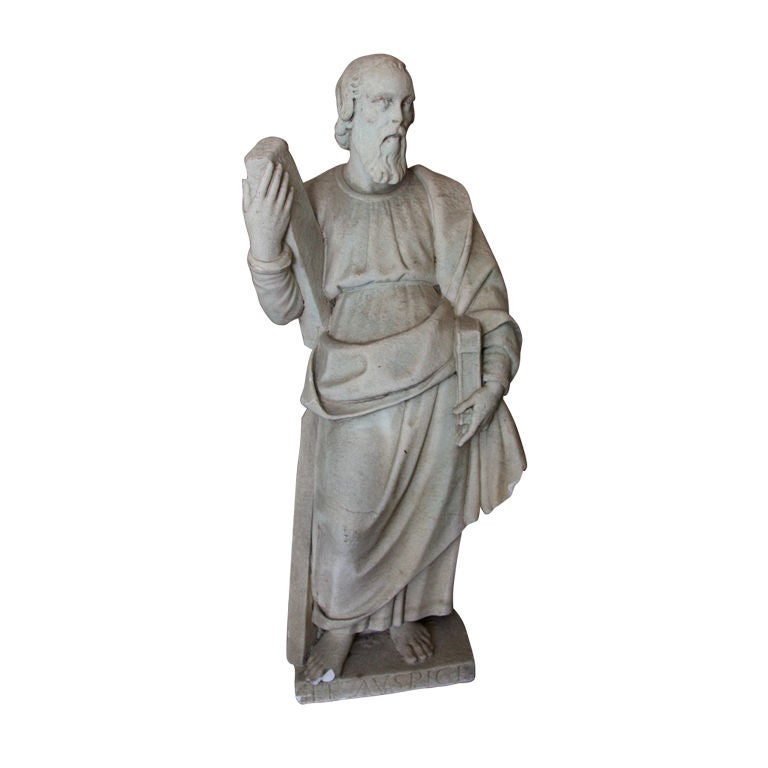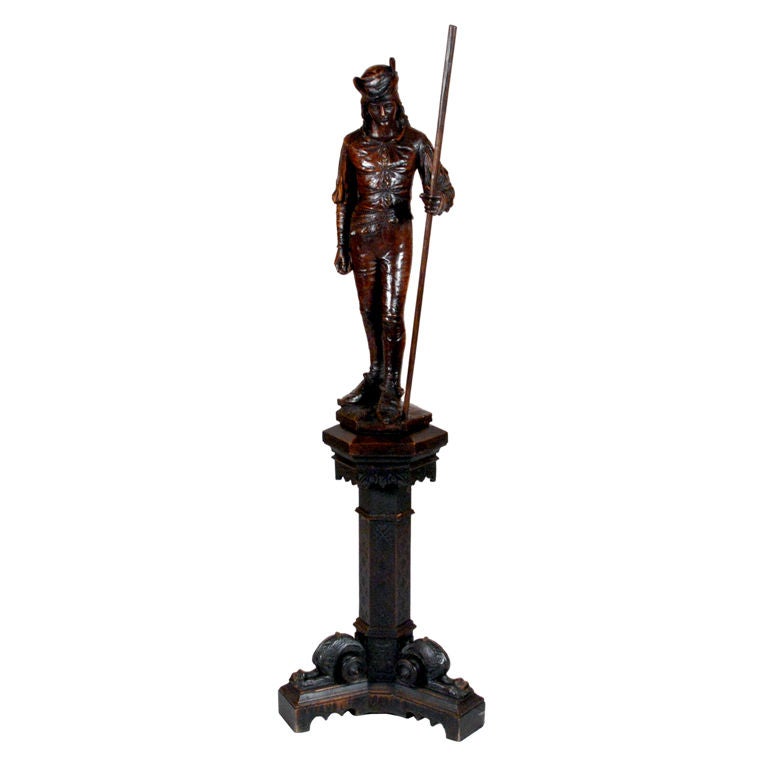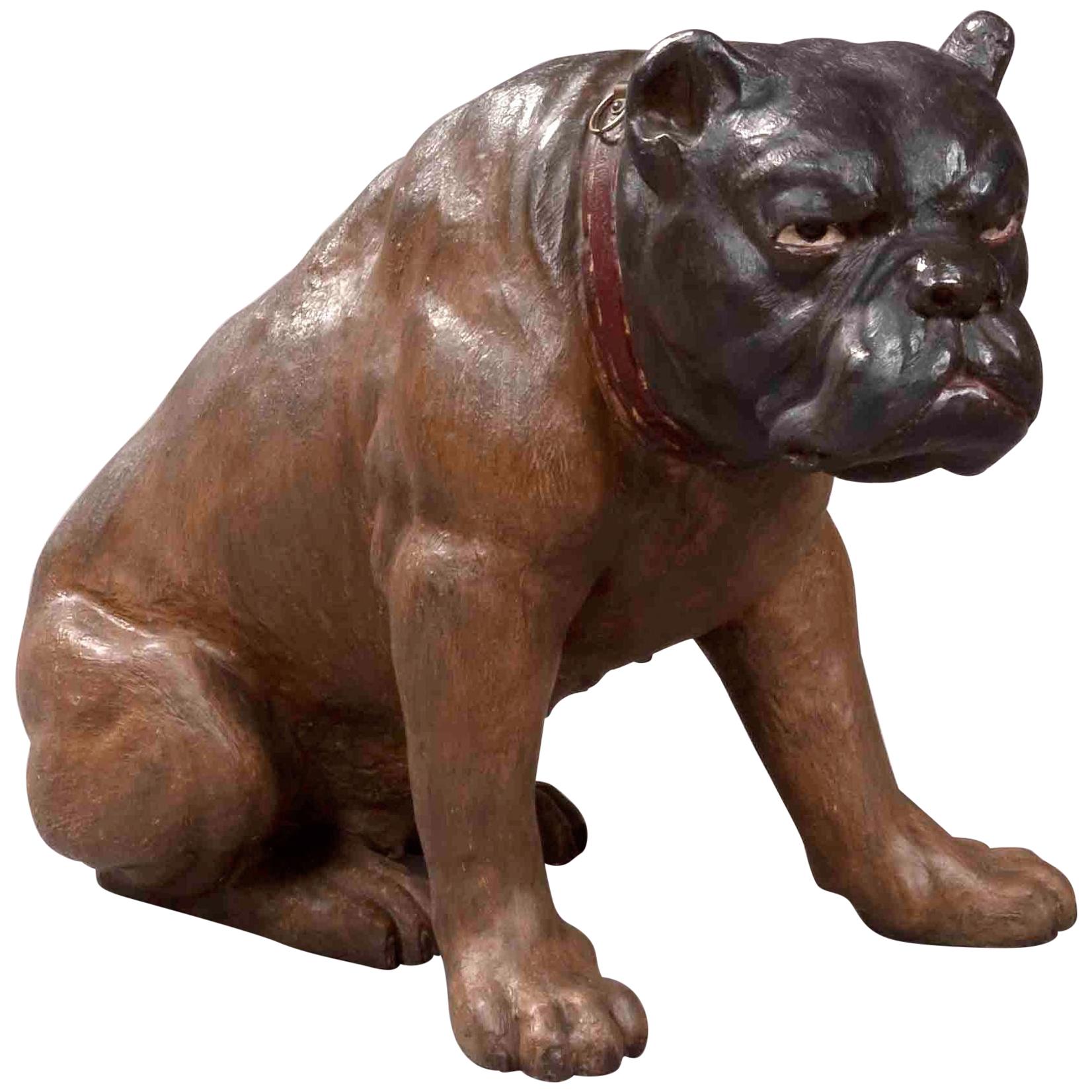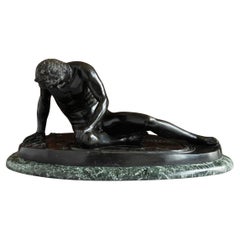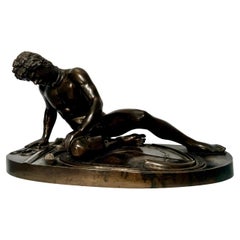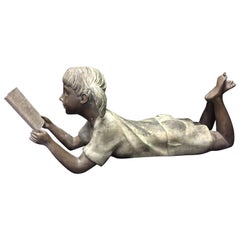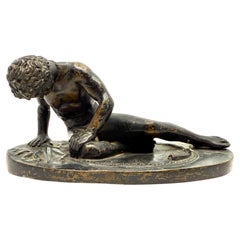
Bronze figure of the Dying Gaul
View Similar Items
1 of 7
Bronze figure of the Dying Gaul
About the Item
- Dimensions:Height: 15 in (38.1 cm)Width: 30 in (76.2 cm)Depth: 14 in (35.56 cm)
- Materials and Techniques:
- Place of Origin:
- Period:
- Date of Manufacture:18/19th century
- Condition:small nick to horn laying by his side, otherwise excellent.
- Seller Location:Woodbury, CT
- Reference Number:1stDibs: 09032886261
Authenticity Guarantee
In the unlikely event there’s an issue with an item’s authenticity, contact us within 1 year for a full refund. DetailsMoney-Back Guarantee
If your item is not as described, is damaged in transit, or does not arrive, contact us within 7 days for a full refund. Details24-Hour Cancellation
You have a 24-hour grace period in which to reconsider your purchase, with no questions asked.Vetted Professional Sellers
Our world-class sellers must adhere to strict standards for service and quality, maintaining the integrity of our listings.Price-Match Guarantee
If you find that a seller listed the same item for a lower price elsewhere, we’ll match it.Trusted Global Delivery
Our best-in-class carrier network provides specialized shipping options worldwide, including custom delivery.You May Also Like
Antique Bronze Figure of The Dying Gaul
Located in London, GB
A bronze figure of the dying Gaul after the Antique, on verde marble base, Italian, nineteenth century.
Dimensions: 30.5cm (12") High, 35cm (13¾") Wide, 65cm (25½") Long, 13.5cm (5¼...
Category
Antique 19th Century Italian Classical Greek Figurative Sculptures
Materials
Marble, Bronze
Grand Tour bronze figure of “The Dying Gaul”, After The Antique
Located in Montreal, QC
A late 19th century Grand Tour bronze figure of “The Dying Gaul”, after the antique. The Dying Gaul depicts a warrior in his final moments, next to his shield and sword, his face contorted in pain just before he collapses from the mortal wound to his chest The original marble figure, which is in the Capitoline museum in Rome is thought to be a Roman copy of a Greek sculpture in Bronze. As an image of a vanquished enemy, the sculpture embodies courage in defeat, self-possession in the face of death, and the recognition of nobility in an alien race.
“The Dying Gaul” was found in Rome with another ancient marble...
Category
Antique Late 19th Century Italian Classical Greek Figurative Sculptures
Materials
Bronze
Italian Bronze Figure of a Little Girl
Located in Cypress, CA
Cute Italian bronze figure of a pigtailed little girl laying on her belly with her legs crossed enjoying a book. Weathered patina.
Early 20th c...
Category
Early 20th Century Italian Figurative Sculptures
Materials
Bronze
Grand Tour Neoclassical Bronze of “The Dying Gaul”
Located in Palm Springs, CA
A nice little bronze Grand Tour souvenir bronze of the Dying Gaul a famous sculpture of antiquity preserved in Rome. This bronze has nice detail. The patina is worn in some places and it is in estate found condition. We haven’t tried to clean or polish it.
Some patina loss minor nicks and surfaces scratches, please see the detailed photos.
For this interested this from Wikipedia about the original sculpture:
The Dying Gaul, also called The Dying Galatian[2] (Italian: Galata Morente) or The Dying Gladiator, is an ancient Roman marble semi-recumbent statue now in the Capitoline Museums in Rome. It is a copy of a now lost Greek sculpture from the Hellenistic period (323–31 BC) thought to have been made in bronze.[3] The original may have been commissioned at some time between 230 and 220 BC by Attalus I of Pergamon to celebrate his victory over the Galatians, the Celtic or Gaulish people of parts of Anatolia. The original sculptor is believed to have been Epigonus, a court sculptor of the Attalid dynasty of Pergamon.
Until the 20th century, the marble statue was usually known as The Dying Gladiator, on the assumption that it depicted a wounded gladiator in a Roman amphitheatre.[4] However, in the mid-19th century it was re-identified as a Gaul or Galatian and the present name "Dying Gaul" gradually achieved popular acceptance. The identification as a "barbarian" was evidenced for the figure's neck torc, thick hair and moustache, weapons and shield carved on the floor, and a type of Gallic carnyx between his legs.[5]
Description
The white marble statue, which may originally have been painted, depicts a wounded, slumped Gaulish or Galatian Celt, shown with remarkable realism and pathos, particularly as regards the face. A bleeding sword puncture is visible in his lower right chest. The warrior is represented with characteristic Celtic hairstyle and moustache with a Celtic torc...
Category
Early 20th Century Italian Figurative Sculptures
Materials
Bronze
Vintage Bronze Male Figure on Marble Base
Located in Bloomfield Hills, MI
For centuries, artists have been inspired by the human figure and crafted the likeness in a multitude of materials. One of the most popular and ancient of these materials is cast bro...
Category
20th Century French Figurative Sculptures
Materials
Bronze
Italian Glazed Terracotta Figural Bust of Diana, Goddess of the Moon, Circa 1850
Located in Charleston, SC
Italian glazed and hand-painted terracotta figural bust of Diana raised on a two tiered circular faux painted plinth. Goddess of the moon, Mid-19th Century.
Category
Antique 1850s Italian Neoclassical Figurative Sculptures
Materials
Terracotta, Paint
Recently Viewed
View AllMore Ways To Browse
Antique Sword Pins
French Lay Figure
Dying Gaul
The Dying Gaul
Bronze Dying Gaul
Gaul Statue
Faun Garden Statues
Garden Scuplture
Gnome Statue
Life Sized Venus Garden Statue
Lisa Lyon
Pair Of Sculpted Stone Lion Garden Statues
Terracotta Griffin
Vintage Flamingo Statue
White Marble Angel Statue
Zinc Garden Figure
18th Century Hindu Statues
Antique Cast Iron Dog Statue
